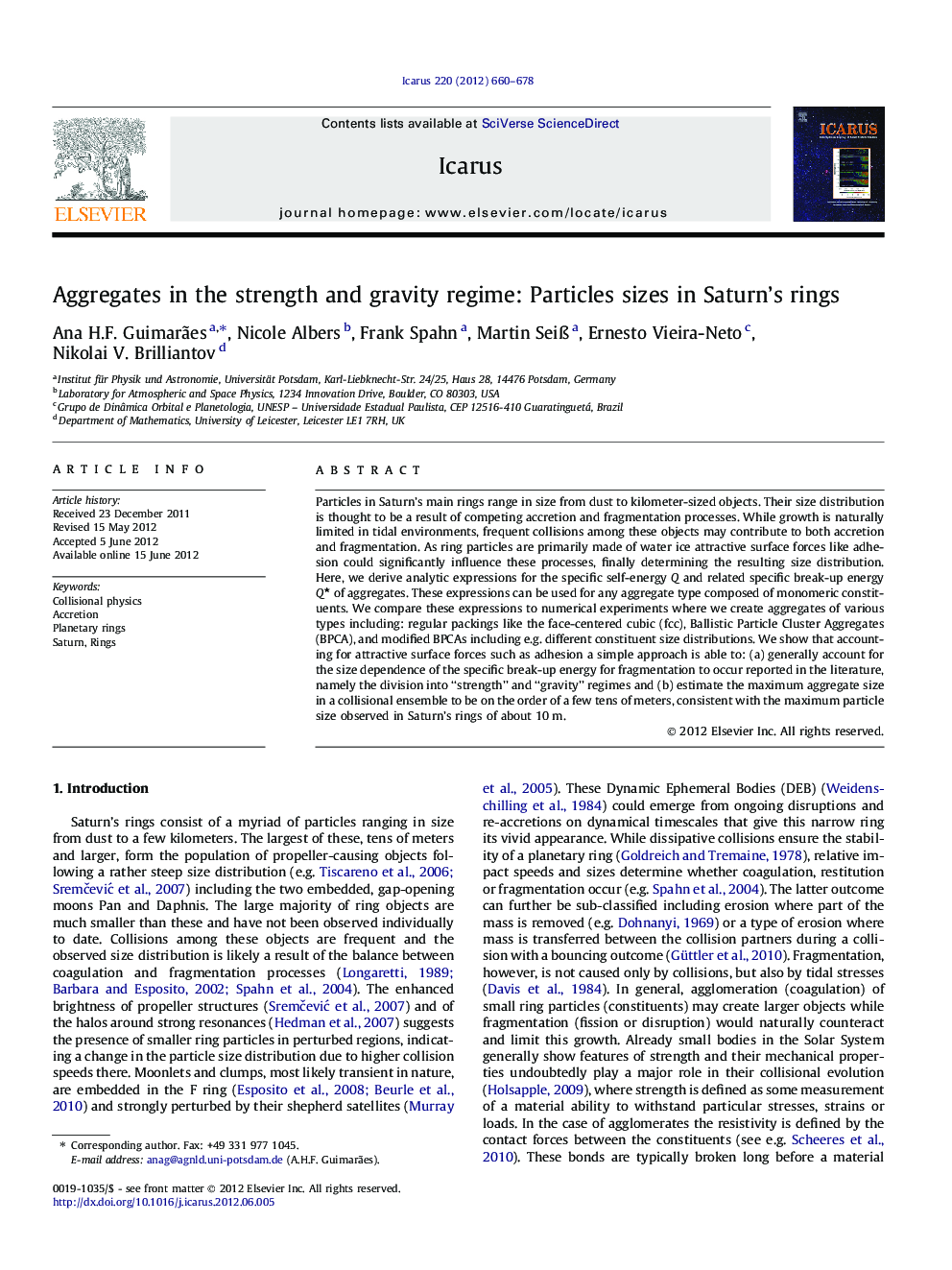| Article ID | Journal | Published Year | Pages | File Type |
|---|---|---|---|---|
| 1773435 | Icarus | 2012 | 19 Pages |
Particles in Saturn’s main rings range in size from dust to kilometer-sized objects. Their size distribution is thought to be a result of competing accretion and fragmentation processes. While growth is naturally limited in tidal environments, frequent collisions among these objects may contribute to both accretion and fragmentation. As ring particles are primarily made of water ice attractive surface forces like adhesion could significantly influence these processes, finally determining the resulting size distribution. Here, we derive analytic expressions for the specific self-energy Q and related specific break-up energy Q★ of aggregates. These expressions can be used for any aggregate type composed of monomeric constituents. We compare these expressions to numerical experiments where we create aggregates of various types including: regular packings like the face-centered cubic (fcc), Ballistic Particle Cluster Aggregates (BPCA), and modified BPCAs including e.g. different constituent size distributions. We show that accounting for attractive surface forces such as adhesion a simple approach is able to: (a) generally account for the size dependence of the specific break-up energy for fragmentation to occur reported in the literature, namely the division into “strength” and “gravity” regimes and (b) estimate the maximum aggregate size in a collisional ensemble to be on the order of a few tens of meters, consistent with the maximum particle size observed in Saturn’s rings of about 10 m.
► We derive analytical expressions for the self-energy and resistivity of aggregates. ► Adhesion accounts for a division into strength- and gravity-dominated regime. ► Numerical experiments including Ballistic Particle Cluster Aggregate support our findings. ► Estimated particle size range within Saturn’s rings are consistent with observations.
